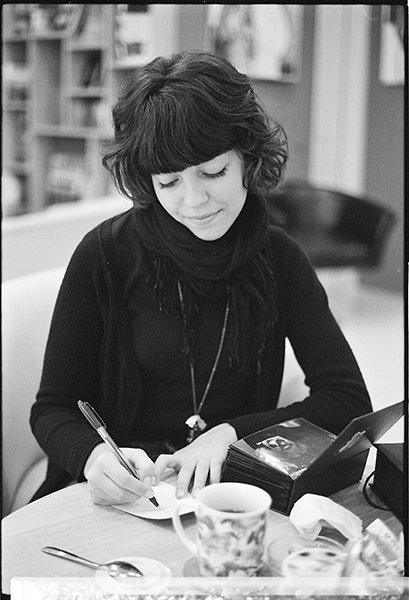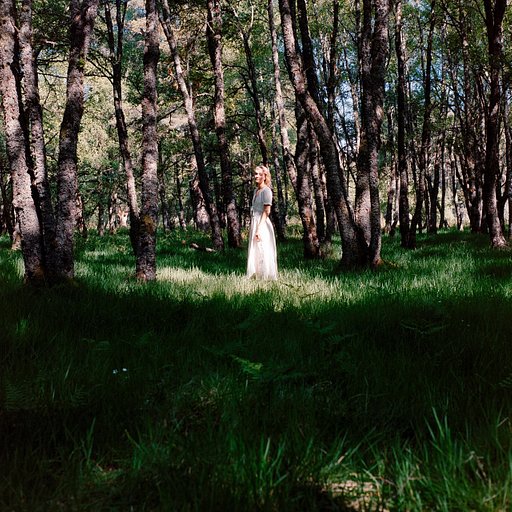Make an Empty Paint Can Into a Pinhole Camera
2 17 Share TweetFor this tipster, we'll be turning an empty paint can into a pinhole camera.

Making the Camera:
Empty paint cans may be purchased from any large hardware store (sometimes called “Cutting Cans”); I spray paint the insides with flat black paint to reduce reflection. I then drill (or use a nail) to make a hole in the front of the can (about 1/8th an inch or 3 mm). I then make my aperture by cutting a 1-inch x 1-inch (2.5x2.5 cm) square of aluminum from a pop can with scissors and making a very fine hole in the center using the beading needle (I taped the needle to a nail to make it easier to handle). I then used the fine sandpaper to get rid of any burrs around this hole. This square is then taped over the 1/8th-inch hole in the paint can with electricians tape. A piece of electricians tape can be placed over the hole to create a shutter, however, I tend to cover the hole with my finger, my finger becomes the shutter.
Loading the Camera:
In a darkroom (with a safelight) tape a piece of photo paper to the back of the paint can so that the emulsion side of the paper faces the pinhole. I typically cut an 8x10 inch sheet into two 5x8 inch negatives (a large 7x10 inch piece of photo-paper will also fit the camera). Put the lid on the paint can, cover the aperture and go outside to take your photo.
Taking Your First Picture:
This camera will work best on a bright sunny day outdoors. Put the paint can on a solid surface such as the pavement and remove your finger to start the exposure. The small pinhole gives sharper images however exposure time is longer; I use exposures between 30 seconds (bright and sunny) and up to 5 minutes (an overcast day). Once the exposure is complete, cover the pinhole and return to the darkroom.
Processing the Image:
Open the camera in the darkroom; sometimes you may need a bottle opener or screwdriver to pry open the lid. Put the paper negative through the photo trays as you would a normal black and white print. If the negative comes out too light (too white looking) double the amount of exposure to 1 minute, if this exposure is also too light, double again to 4 minutes. It will take a bit of trial and error. Reduce the exposure time if the image comes out too dark (also look for light leaks). I use a marker pen to note the exposure that works best on the lid of the camera under different conditions. Note: this camera would need an extremely long exposure to shoot indoors; it would be difficult to find the right exposure time due to reciprocity failure. Once you have a good negative, the paper negative can be contact printed to make a positive image in the darkroom (emulsion to emulsion) or scanned and converted to a positive image, I prefer this method.
Composition:
The curve of the paint can give the photo a sort of barrel distortion and the long exposure can make a moving object disappear and make moving water become a foggy blur. These cameras have an infinite depth of field; exploit this characteristic by having objects very close the camera as well as objects that are further away. Play with the scale of the objects, for example, toys close to the camera increase their scale compared to the surroundings while keeping them in sharp focus. Figures are difficult yet rewarding to shoot, the less movement the more recognizable the figure will be, have you model lean up against a solid object or lie down to help prevent them from moving.
Advantages and Disadvantages:
Produces a very large 7x10 inch negative, infinite depth of field and slow shutter speed allows for creative effects. Disadvantage – the camera only takes one image at a time, for the most part, I have been restricted to taking photos close to the darkroom itself. I have not tried loading the camera in the field using a black bag, however, I see no reason why this would not work. Another solution is to make several Paint Can pinhole cameras with you on you pinhole photo safari, loaded with photo paper.

This tipster was written by Lomographer akula. Make sure to follow other Lomographers by creating your own LomoHome!
written by akula on 2013-09-04 #gear #tutorials #tipster #select-type-of-tipster #select-what-this-tipster-is-about #pinhole-camera-paint-can-diy-instructions-camera-paper-negative-long-exposure-infinite-depth-of-field-darkroom
















2 Comments